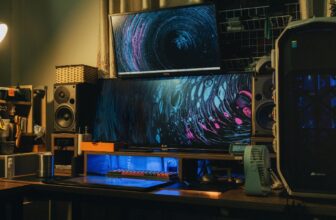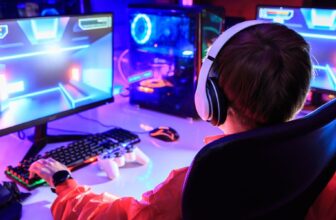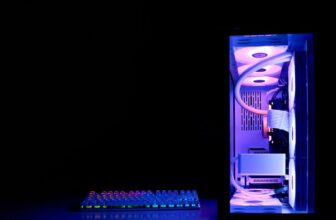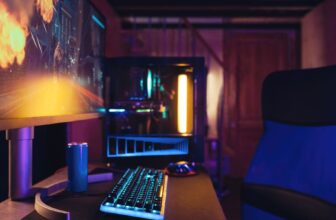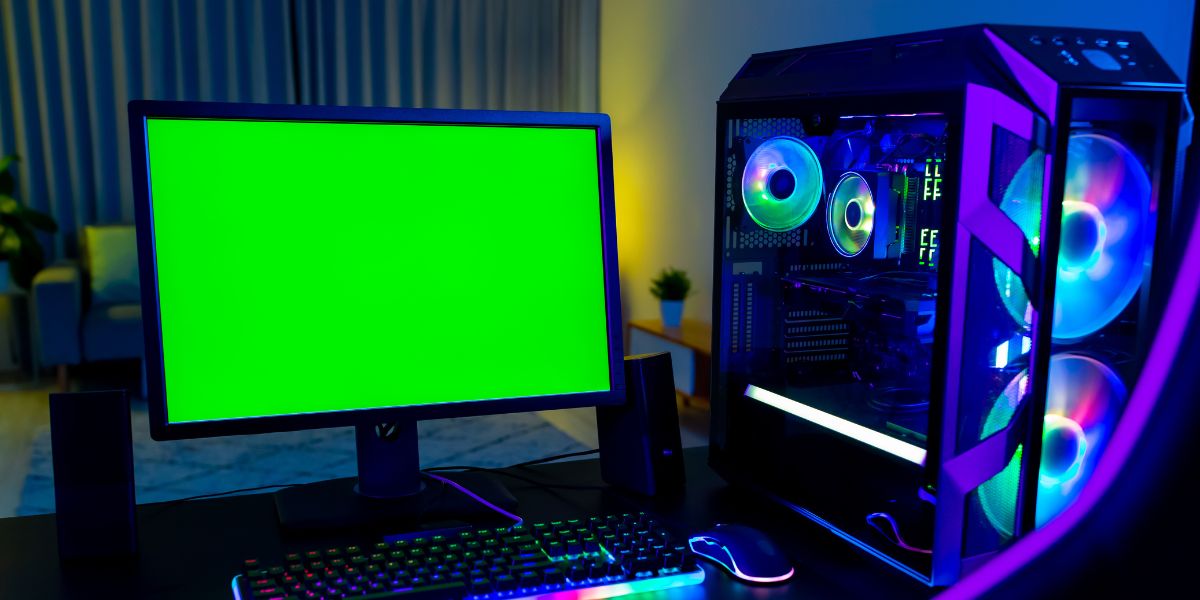
Proper cooling is not just a luxury but a necessity for your gaming desktop's performance. You might be surprised to learn how significantly cooling impacts your gameplay experience. From preventing system slowdowns to extending the lifespan of your components, the role of cooling in gaming desktop performance goes beyond just keeping things cool. So, before you dive into your next gaming session, consider the critical role that cooling systems play in unleashing the full potential of your desktop setup.
Importance of Proper Cooling Systems
Proper cooling systems are essential for optimal gaming desktop performance. When you're pushing your system to the limits with intense gaming sessions, your components generate a significant amount of heat. Without adequate cooling, this heat can build up, leading to thermal throttling and decreased performance. A well-designed cooling system helps dissipate this heat efficiently, keeping your components running smoothly and preventing any potential damage from overheating.
Investing in quality cooling solutions, such as efficient fans, heatsinks, and liquid cooling systems, is crucial to maintain consistent performance and extend the lifespan of your gaming desktop. By ensuring proper airflow and temperature regulation within your system, you can prevent unexpected shutdowns or hardware failures during critical gaming moments. Additionally, a well-cooled system allows you to push your hardware to its full potential, achieving higher frame rates and smoother gameplay experiences.
Impact of Temperature on Performance
Maintaining optimal temperatures is crucial for maximizing gaming desktop performance and longevity. When your gaming desktop operates at high temperatures, its components can suffer from thermal throttling, where the system reduces performance to prevent damage. This can lead to decreased frame rates, slower loading times, and overall sluggishness in your gaming experience. Additionally, prolonged exposure to high temperatures can shorten the lifespan of your hardware, potentially leading to costly repairs or replacements.
High temperatures can also impact the stability of your system. As components heat up, they become less reliable, increasing the likelihood of crashes, freezes, and other performance issues during intense gaming sessions. By ensuring that your gaming desktop stays within recommended temperature ranges, you can maintain peak performance and enjoy smoother gameplay without interruptions. Investing in effective cooling solutions and regularly cleaning your system to prevent dust buildup are essential steps in mitigating the negative impact of temperature on your gaming desktop's performance.
Types of Cooling Solutions for Gaming Desktops
To optimize your gaming desktop's performance and prevent overheating issues, exploring various cooling solutions is imperative. There are several types of cooling solutions you can consider for your gaming rig.
The most common type is air cooling, which utilizes fans to dissipate heat from the components. Air coolers are generally affordable and easy to install, making them a popular choice among gamers. However, they may not be as effective as other more advanced cooling options.
Liquid cooling, on the other hand, is a more efficient solution that uses a closed-loop system to circulate coolant and remove heat from the CPU and GPU. This type of cooling is known for its superior performance and quieter operation, but it can be more expensive and complex to set up.
Alternatively, you can also explore hybrid cooling solutions that combine both air and liquid cooling technologies for optimal performance. These hybrid coolers offer a balance between efficiency and cost, providing a good middle-ground option for gamers looking to enhance their desktop's cooling capabilities.
Overclocking and Cooling Considerations
Enhancing your gaming desktop's performance through overclocking requires strategic cooling considerations to optimize stability and longevity. When overclocking your system, you push the components beyond their factory-set limits to gain increased performance. This generates more heat, necessitating efficient cooling solutions to prevent overheating and potential damage.
Investing in a high-quality CPU cooler is essential when overclocking your processor. Air coolers and liquid coolers are popular choices, each with its pros and cons. Air coolers are cost-effective and easy to install, while liquid coolers offer superior heat dissipation but can be more complex and expensive.
Additionally, optimizing airflow within your gaming desktop's case is crucial. Proper cable management, strategic fan placement, and ensuring unobstructed airflow paths help maintain lower temperatures and improve overall system stability during overclocking sessions.
Remember that overclocking puts extra stress on your components, so monitoring temperatures using software tools and regularly cleaning your cooling solutions are vital for long-term performance and reliability. By carefully considering your cooling options, you can unleash the full potential of your gaming desktop while keeping it running smoothly.
Maintenance Tips for Cooling Efficiency
For optimal cooling efficiency, regularly clean dust buildup from your CPU cooler and case fans. Dust accumulation can significantly hinder airflow, leading to higher temperatures and reduced cooling performance.
To clean your CPU cooler, carefully remove any visible dust using compressed air or a soft brush. Pay close attention to the heatsink fins and fan blades.
For case fans, power off your system, detach the fans, and clean them using a cloth or compressed air. Additionally, ensure that your PC is placed in a well-ventilated area to prevent dust buildup.
Monitoring your system's temperatures using software can help you identify any cooling issues promptly. If you notice persistent high temperatures, consider upgrading your cooling solution or adjusting fan speeds.

